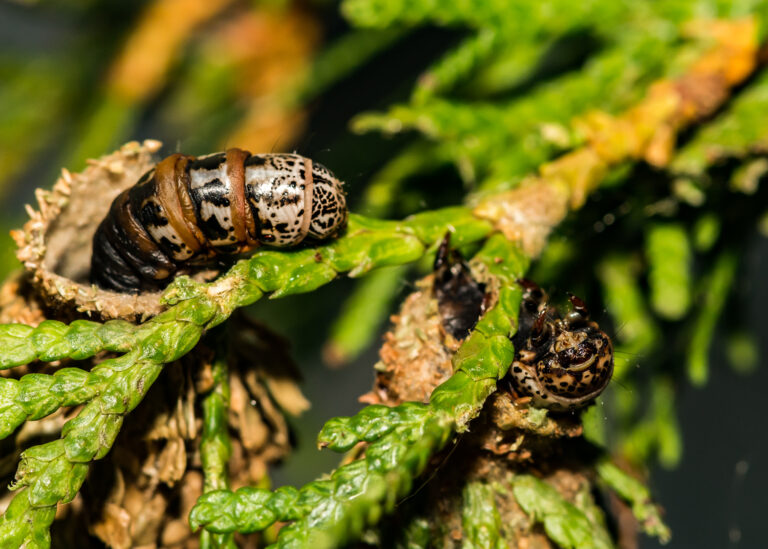If you’ve noticed strange, cone-like bags hanging from your trees, you may want to take a closer look. These bags are actually the homes of bagworms, a type of moth that can cause significant damage to your trees.
Despite their name, bagworms aren’t actually worms, but rather the larvae of a moth. They live their entire life cycle inside their protective bags, which they construct using silk and bits of foliage. As they grow, their bags get bigger, and they can eventually resemble small cones.

Bagworms typically infest evergreen and deciduous trees, and their favorite host plants include cedar, arborvitae, and juniper. However, they’ll eat the foliage of just about any tree if their preferred hosts aren’t available.
The problem with bagworms is that they can cause significant damage to your trees. As they feed on the leaves, they make it harder for the tree to photosynthesize and produce the nutrients it needs to survive. This can weaken the tree, making it more prone to diseases, pests, and environmental stressors.

If left untreated, a bagworm infestation can eventually kill your tree. However, there are several ways to manage bagworms. One method is to manually remove each bag from the tree, but this can be time-consuming and labor-intensive.
Other methods include pruning and destroying affected branches, encouraging natural predators like birds and parasitic wasps, and using chemical control as a last resort. It’s also important to take preventative measures, such as regularly inspecting your trees, maintaining good tree health, and monitoring the surrounding vegetation.
By being aware of the dangers posed by bagworms and taking steps to prevent and manage infestations, you can help protect your trees and keep them healthy for years to come.


